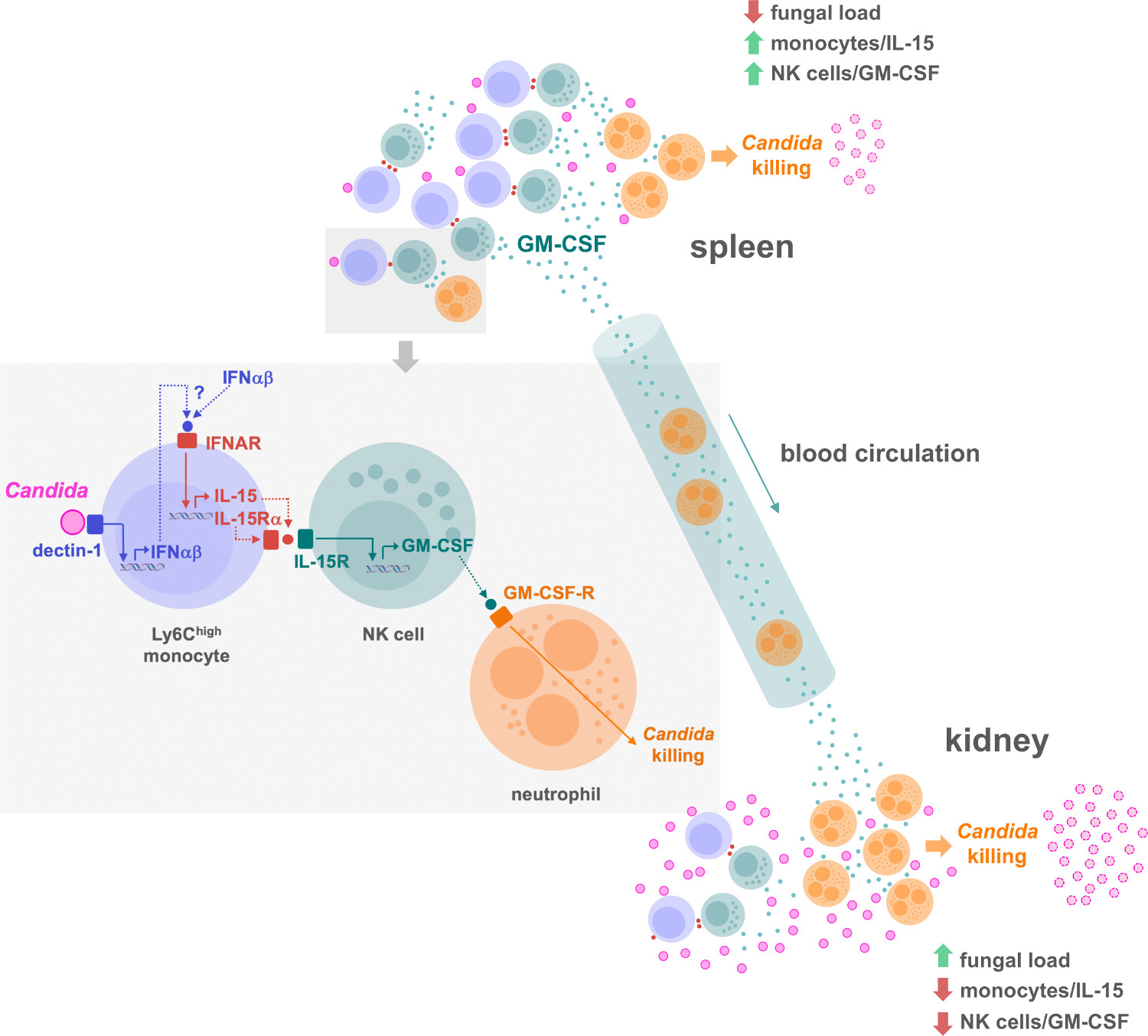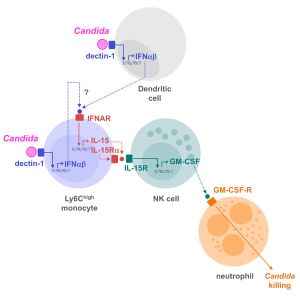A group of scientists at the Centro Nacional de Biotecnología of the CSIC (CNB-CSIC) has detailed the defence strategy implemented by the immune system against a systemic attack by the Candida fungus. The study, published today in the journal Immunity, proposes a scenario in which the spleen acts as a headquarters in which defences are established to terminate an infection that affects the whole body.
Their research also highlights the central role of interleukin 15 (IL-15) in this battle. This molecule, which to date was not linked to fungal infections, activates the innate immune system through an interferon type I (IFN-1)-mediated mechanism. "The incorporation of these two new actors presents a promising scenario for the development of new therapies against systemic candidiasis," explains Carlos Ardavín, a CNB-CSIC researcher and lead author of the paper.
Coordinated defence between kidney and spleen
The study, carried out in mice, indicates that after detecting infection, spleen monocytes begin to produce IFN-1. This in turn induces release of IL-15, responsible for activating natural killer (NK) cells. Finally, neutrophils activated by the NK cells travel to the infection site and eradicate the fungus.
Although fungal infections pose a considerable threat, their impact on human health is less well recognized than that of other diseases. Systemic candidiasis is estimated to affect half a million people every year. It is a problem of particular importance for immunosuppressed patients, among whom it causes up to 40% mortality.
According to the researchers, multi-resistant Candida species are beginning to appear that cause increasingly severe infections; it is therefore urgent to explore new antifungal therapeutic strategies. In addition, the scientists say that effectiveness of classical treatments is limited in patients who receive immunosuppressive drugs. "The results of our research suggest that new IL 15-based therapies could be a very promising strategy against these infections," Ardavín concludes.

Innate immune system defence strategy against Candida. / Carlos Ardavín, CNB-CSIC
- Jorge Domínguez-Andrés, Lidia Feo-Lucas, María Minguito de la Escalera, Leticia González, María López-Bravo and Carlos Ardavín. Inflammatory Ly6Chigh monocytes protect against candidiasis through IL-15-driven NK cell/neutrophil activation. Immunity 2017; DOI: http://dx.doi.org/10.1016/j.immuni.2017.05.009

